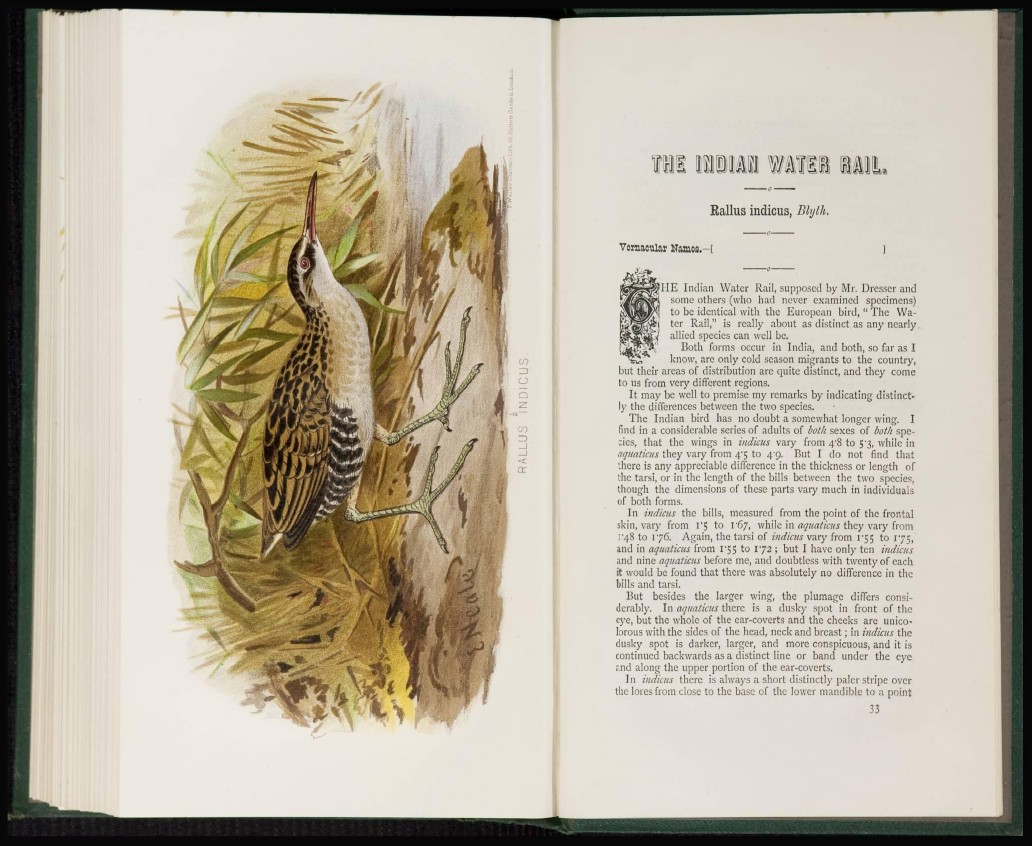
Rallus indicus, Blyth.
Vernacular Namos.-[ ]
HE Indian Water Rail, supposed by Mr. Dresser and
some others (who had never examined specimens)
to be identical with the European bird, " The Water
Rail," is really about as distinct as any nearly
allied species can well be.
Both forms occur in India, and both, so far as I
know, are only cold season migrants to the country,
but their areas of distribution are quite distinct, and they come
to us from very different regions.
It may be well to premise my remarks by indicating distinctly
the differences between the two species.
The Indian bird has no doubt a somewhat longer wing. I
find in a considerable series of adults of both sexes of both species,
that the wings in indicus vary from 4'8 to 5'3, while in
aquations they vary from 4-5 to 4'cj. But I do not find that
there is any appreciable difference in the thickness or length of
the tarsi, or in the length of the bills between the two species,
though the dimensions of these parts vary much in individuals
of both forms.
In indicus the bills, measured from the point of the frontal
skin, vary from i'5 to v67, while in aquations they vary from
i'48 to 176. Again, the tarsi of indicus vary from 1-55 to 175,
and in aquations from 1-5 5 to 172 ; but I have only ten indicus
and nine aquaticus before me, and doubtless with twenty of eachit
would be found that there was absolutely no difference in the
bills and tarsi.
But besides the larger wing, the plumage differs considerably.
In aquaticus there is a dusky spot in front of the
eye, but the whole of the ear-coverts and the cheeks are unicolorous
with the sides of the head, neck and breast; in indicus the
dusky spot is darker, larger, and more conspicuous, and it is
continued backwards as a distinct line or band under the eye
and along the upper portion of the ear-coverts.
In indicus there is always a short distinctly paler stripe over
the lores from close to the base of the lower mandible to a point